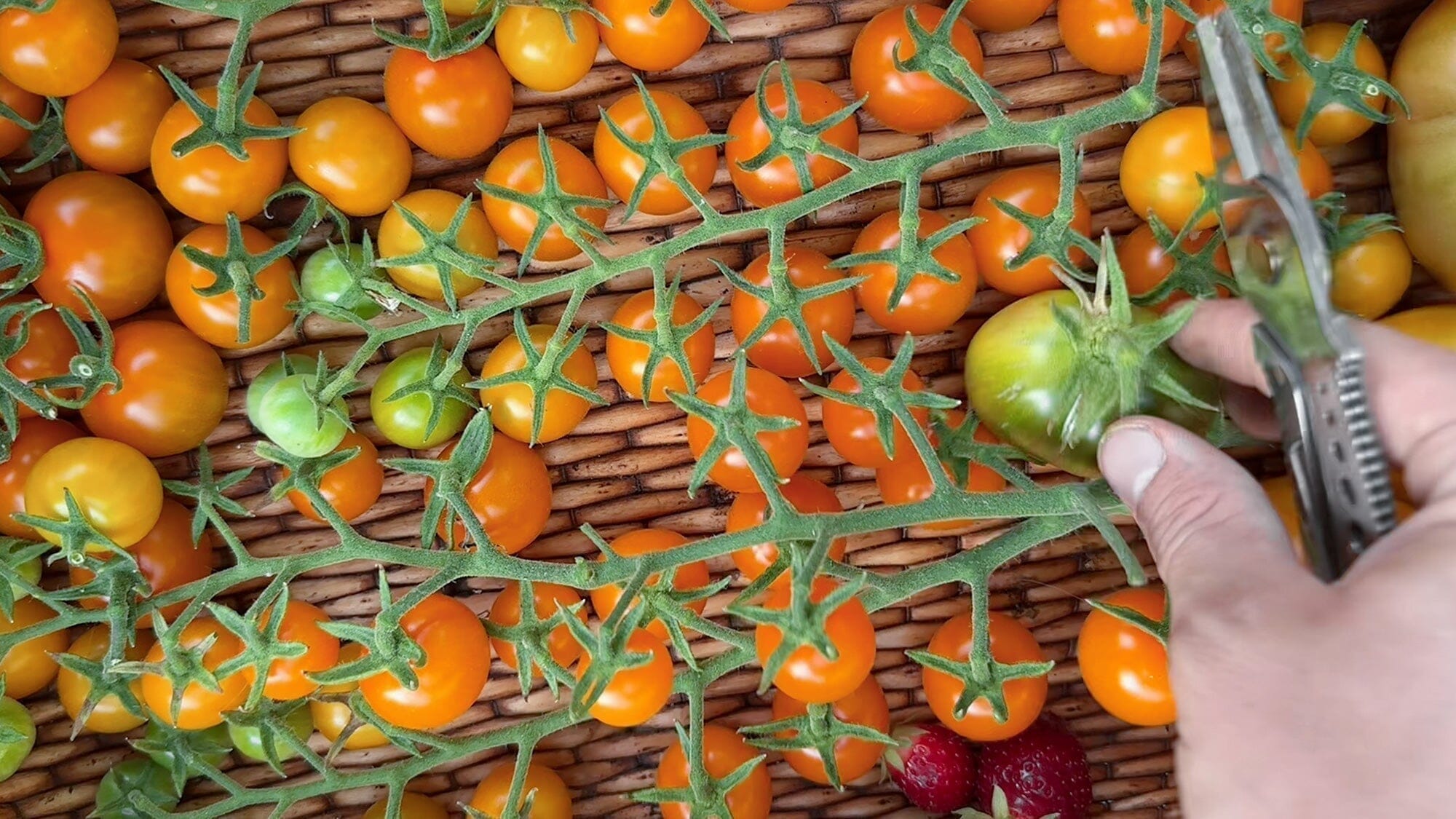By Brianne Dela Cruz; Gather & Grow

There are many benefits to pruning plants while they’re still dormant during late winter and early spring. First, it gives you a great excuse to head into the garden on a sunny day when it’s too early to tackle other spring garden chores. Dormant-season pruning also gives you the best view of the plant’s form and structure, which is a benefit when you’re shaping trees and shrubs. The general purpose of pruning in spring is to first clear out dead plant material so the plant can grow uninhibited, and second to shape unruly stems and branches.
The process of pruning creates a wound that the plant must seal to protect itself from infection. Plants do this by producing a sugary or resinous substance known as sap. During the dormant season the plant's sugary sap is located mostly in its root system. As the plant begins to wake up, the sugars travel up the body and into their limbs. By pruning just before growth begins, you pave the way for fast sealing during their rapid growth spurt in springtime. Pruning when temperatures are cool also reduces the stress a plant experiences. Another advantage of late-winter and early-spring pruning is that pruned plants begin the growing season with a root system that is loaded with stored food from the dormant season. Removing the dead plant material facilitates new growth, unencumbered by dead branches or stems.
-
When & How to Prune
Flowering Shrubs
It’s best to avoid pruning spring-blooming shrubs and herbs, such as lilac or forsythia and instead wait until after their spring flowers fade. Pruning spring-blooming plants in early spring removes the stems and flowers that you want to see bloom early in springtime.
In contrast, you’ll want to prune shrubs that flower during summertime, such as rose of sharon, crape myrtle, hibiscus, and hydrangea in late-winter or early-spring when they begin to show signs of new growth. Place pruning cuts to shape the plant first, then thin the interior of the shrub if it is overly crowded with branches. This is especially beneficial for plants in humid climates because it increases air flow between branches and stems, mitigating the growth of mold and mildew. In cold winter climates, it’s best to wait to prune summer-blooming shrubs until the danger of frost has passed.
-
When & How to Prune
Shrub Roses
Shrub roses are an exception to this general rule. Prune shrub roses while plants are still dormant in late winter, or as new growth emerges in early spring if you live in a cold climate. Make the cuts to shape the plant and remove winter-damaged stems. For climbing roses, only remove winter-damaged growth in late winter or early spring. Because of the woody-tissued branches and stems, shrubs should be pruned with sharp pruning shears or loppers.
-
When & How to Prune
Perennial Herbs
Summer blooming herbs, such as spearmint, chives, comfrey, echinacea, or yarrow, need to be cut near to the ground and should be pruned in two stages. Typically it’s best to trim these types of plants down in early autumn, but springtime pruning is okay too. First, reduce the height of the shrub in early spring but don’t cut stems to their final size until frost is out of the forecast. Once your final average frost date has passed, then it’s time to prune perennial shrubs and herbs to their final size.
For woody-tissued herbs such as sage, lavender, oregano and thyme, avoid cutting the woody tissue in early spring because it can leave the plant exposed to frost or cold damage. Instead, wait to prune them until late spring or early summer when green tissue forms on the plant. After perennial herbs flower, you’ll want to give them a light pruning once again, just to remove the spent flowers. This will keep them healthy and flowering until the end of the growing season. Woody-tissued herbs are best pruned with shears, while green-tissued herbs and annual herbs that have fine stems should be pruned with sharp scissors.
-
When & How to Prune
Vines
Shape vines that flower in summertime while they’re still dormant in late winter and early spring. This group includes grapes, trumpet vine, passionflower, honeysuckle and bittersweet, along with clematis and vines that bloom on new growth. Vines are best pruned using sharp pruning shears, or the Japanese Nata Tool.








